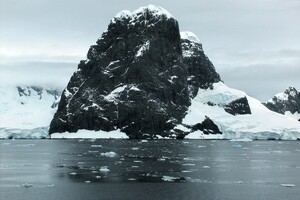The poles of our planet heat up much faster than other regions.

An international group of scientists proposed a cheap way to cool the poles of our planets It is proposed to do this by reducing the amount of sunlight that reaches the poles, reports Science Daily.
The Earth's poles are warming several times faster than the entire planet on average. This leads to the appearance of heat waves recorded over the Arctic and Antarctic. Melting ice and collapsing glaciers here will cause sea levels to rise across the Earth.
Also read: Global warming: Major climate tipping points are near – study
According to researchers, cooling the poles by limiting the amount of sunlight that reaches them would be a cheap but effective way to combat these phenomena.
Scientists propose launching aircraft that will spray microscopic aerosol particles at 60 degrees north and south latitude. If they are sprayed at an altitude of about 13 thousand meters (which is higher than the cruising altitude of an airliner), such particles will slowly drift towards the poles, slightly darkening the surface below them.
Such particle emissions are proposed to be done seasonally, in the spring and early summer The same fleet of jets can operate at both poles, flying from one to the other as the seasons change.
Researchers believe that spraying should be done by refueling planes of a new generation. A fleet of approximately 125 ships will be required to complete the task. It would be able to launch a payload into the air that would cool the poles by about two degrees Celsius. planet, and much less than is necessary to achieve zero emissions.
Related video
Remember, Sea levels around New Zealand have risen twice as fast over the past 60 years as at the beginning of the last century, according to Stats NZ. Climate change has played a major role in this.
See special topic: Global warming may hinder the ability of forests to absorb carbon dioxide Warming prevents tree leaves from cooling. One ocean of the Earth absorbs almost all excess heat on the planet – scientists The consequences of this can be unpredictable. The “Doomsday Glacier” is hanging on “by a thread” – scientists The melting of the glacier can raise the level of the world's oceans by several meters. Extreme heat could make most of the planet uninhabitable by 2100 This will happen even if warming can be stopped within two degrees Celsius. Scientists suggested giving names to heat waves The first one has already been named, she was named Zoya.




